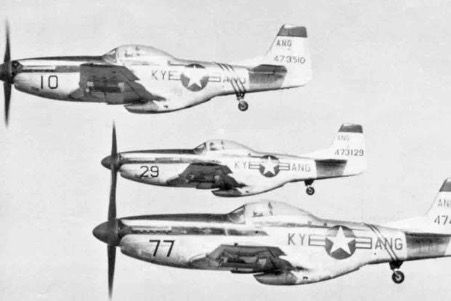Fatal 1948 Accident Traced To Erroneous UFO Sighting Report
As recalled in a story posted on military.com, one of the first American military pilots to respond to a UFO report lost his life while at the controls of his F-51 Mustang piston fighter (changed from P-51 to F-51 after World War II) in January 1948. But it wasn’t advanced alien laser weapons that brought down decorated WWII combat veteran Captain Thomas Mantell, but rather the same hazard that continues to cause aircraft to crash to this day. And the UFO, itself, wasn’t what everyone thought it was, at first.
Mantell led a flight of four Mustangs, scrambled to respond to reports of “a mysterious object” hovering above a farm in Maysville, Kentucky. The four fighters, surplus aircraft assigned to the Kentucky Air National Guard, took off from Godman Army Airfield, located at Fort Knox. Mantell radioed controllers that he had spotted what appeared to be an object that was “metallic” and “tremendous in size,” and that the Mustangs would investigate.
They climbed to 15,000 feet, where the other three pilots stopped since they did not have oxygen on board. Neither did Mantell, but he kept climbing, anyway. Controllers heard no further communications from the aircraft. Local residents saw his Mustang spiral into the ground at high speed. It was later concluded that he had passed out from hypoxia.
The “UFO” turned out to be a secret, high-altitude U.S. Navy atmospheric testing balloon. Mantell would have had no way of knowing this when he took off, or when he chose to pursue the object to dangerously high altitudes.
To cover the secret of the classified balloon, the Air Force told reporters that Mantell died while chasing the planet Venus, despite the fact that the incident occurred in full daylight when Venus would have been visible as just a pinpoint of light in the sky, if at all.



